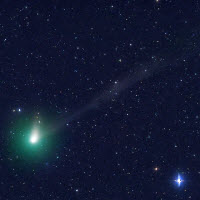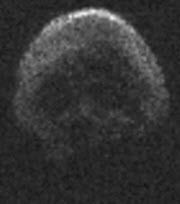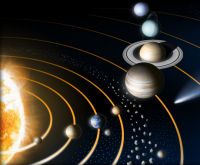 Comet Catalina was discovered on 31 October 2013 by the Catalina Sky Survey with their 0.68 meter Schmidt-Cassegrain telescope.
Comet Catalina was discovered on 31 October 2013 by the Catalina Sky Survey with their 0.68 meter Schmidt-Cassegrain telescope.
It is closest to the Sun on 15-Nov-2015... [Read more about Comet C/2013 US10 Catalina]
- Log in to post comments
 Comet Catalina was discovered on 31 October 2013 by the Catalina Sky Survey with their 0.68 meter Schmidt-Cassegrain telescope.
Comet Catalina was discovered on 31 October 2013 by the Catalina Sky Survey with their 0.68 meter Schmidt-Cassegrain telescope.
It is closest to the Sun on 15-Nov-2015... [Read more about Comet C/2013 US10 Catalina]
 A large asteroid discovered just a few weeks ago will narrowly miss the Earth on Oct 31st – Halloween.
A large asteroid discovered just a few weeks ago will narrowly miss the Earth on Oct 31st – Halloween.
Nicknamed “the Great Pumpkin” and “Spooky” but technically known as 2015 TB145, is an estimated 400m wide – 20 times bigger than the meteorite that exploded over Chelyabinsk in 2013... [Read more about Pumpkin or Skull? Asteroid 2015 TB145 "Near Miss"]
 In this month's edition:
In this month's edition:
 In this month's edition:
In this month's edition:
 In this month's edition:
In this month's edition:
 In this month's edition:
In this month's edition:
 In this month's edition:
In this month's edition:
 And here’s some more fantastic news, Rosetta's lander Philae has woken up after seven months in hibernation on the surface of Comet 67P/Churyumov-Gerasimenko, and by all acounts ‘is doing very well’... [Read more about Rosetta and Philae Update]
And here’s some more fantastic news, Rosetta's lander Philae has woken up after seven months in hibernation on the surface of Comet 67P/Churyumov-Gerasimenko, and by all acounts ‘is doing very well’... [Read more about Rosetta and Philae Update]
 In this month's edition:
In this month's edition:
 In this month's edition:
In this month's edition: